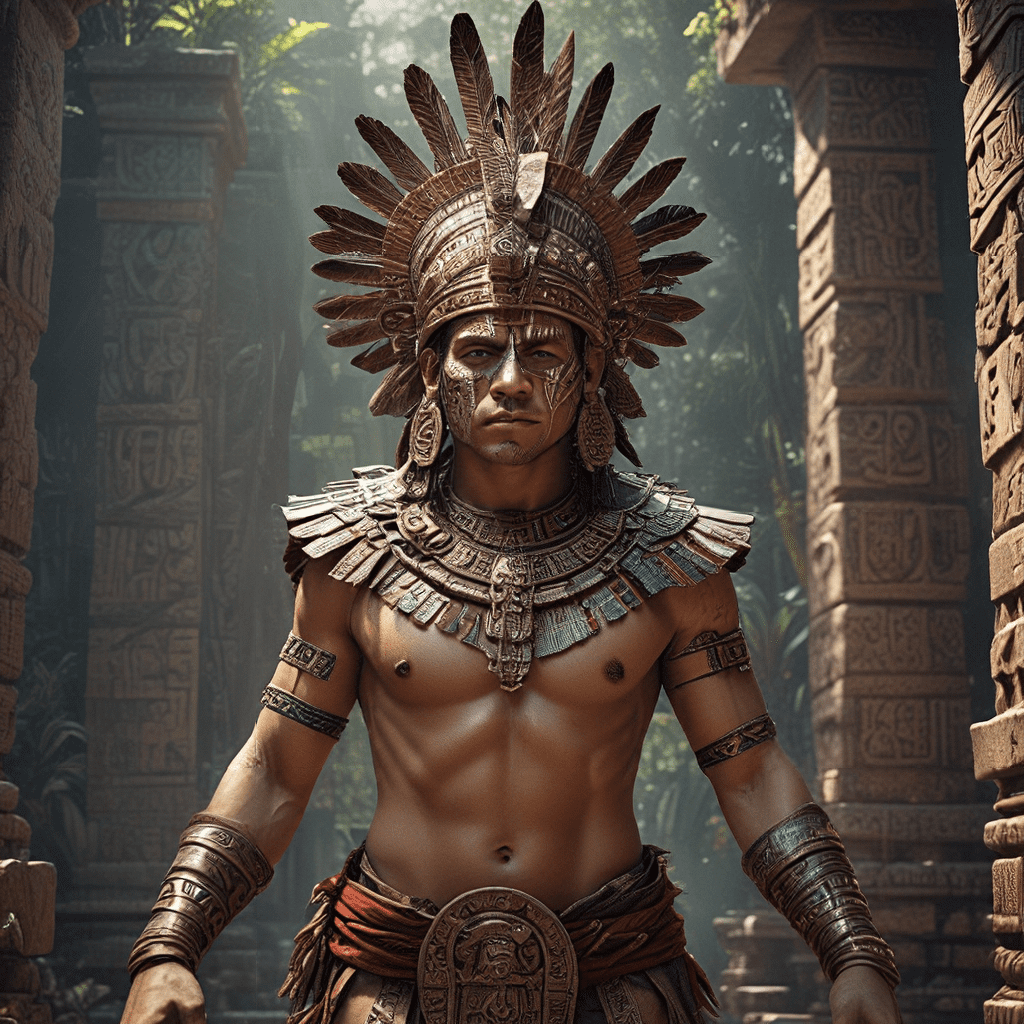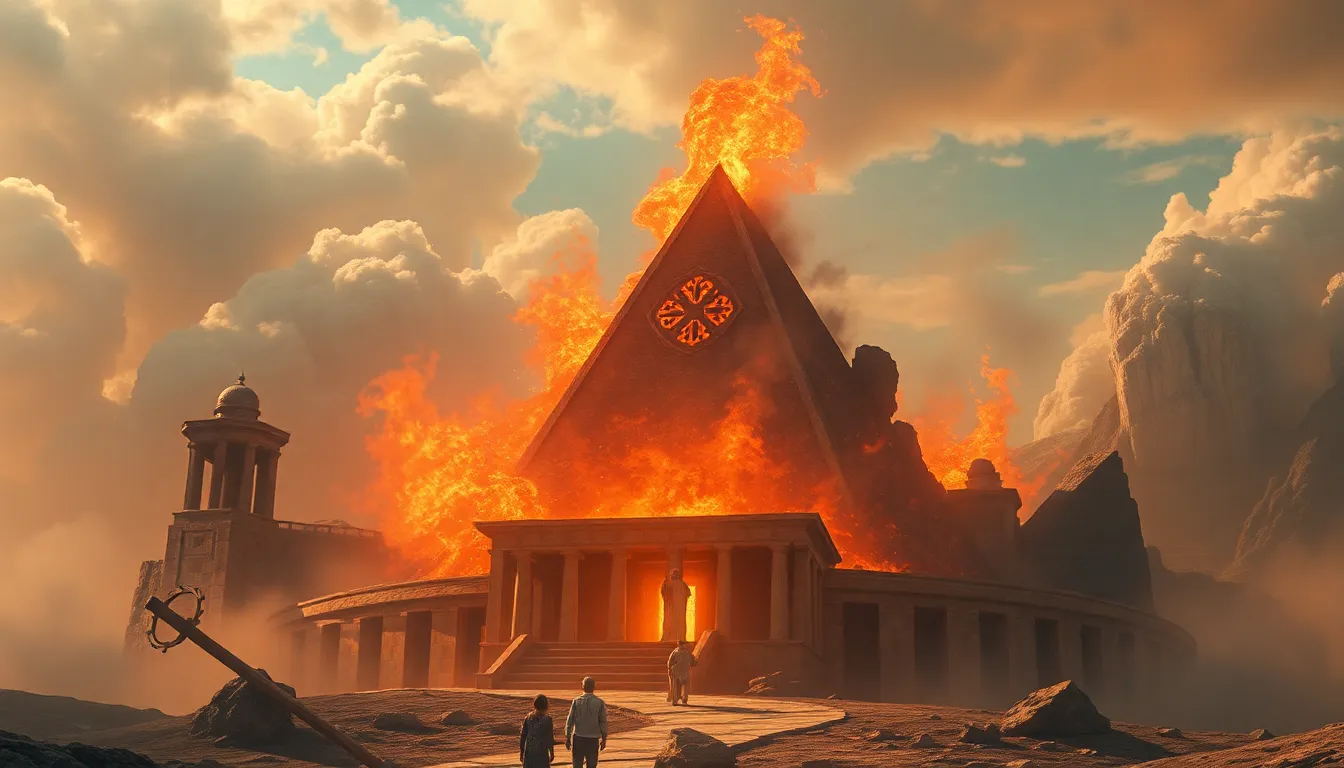Aztec Mythology: Exploring the Concept of Sacrifice
The Aztec civilization, renowned for its intricate art, advanced architecture, and complex social structure, was also deeply intertwined with a rich and vibrant mythology. At the heart of this mythology lies the concept of sacrifice—a practice that permeated every aspect of Aztec life, from daily rituals to grand ceremonies. To truly understand the Aztec worldview, we must delve into the profound significance of sacrifice.
The Cosmic Dance: Understanding Aztec Cosmology
The Aztec cosmos was a dynamic and intricate realm, governed by a complex pantheon of deities. The universe, according to Aztec beliefs, was divided into thirteen heavens and nine underworlds, each ruled by specific gods. This intricate cosmic order was maintained through a delicate balance of forces, and humans played a vital role in this cosmic dance.
The Aztecs believed that the sun, known as Tonatiuh, needed nourishment to continue its journey across the sky, and this nourishment was provided through human sacrifice. By offering their blood, the Aztecs believed they were providing the sun with the energy it needed to sustain life on Earth.
The Heart of the Sun: Huitzilopochtli and the Blood Pact
Among the many Aztec deities, Huitzilopochtli, the god of war and the sun, held a prominent place in the sacrificial rituals. Huitzilopochtli was believed to be the protector of the Aztecs, guiding them to victory in battle and ensuring their survival. The Aztecs saw themselves as bound to Huitzilopochtli through a blood pact, a sacred covenant sealed through sacrifice.
This blood pact was a two-way agreement. Huitzilopochtli promised to guide and protect the Aztecs, while the Aztecs promised to provide him with the sustenance he needed to continue his celestial journey. This pact was deeply ingrained in Aztec culture and reflected the importance of sacrifice in their worldview.
Blood as Sustenance: The Role of Sacrifice in Aztec Belief System
For the Aztecs, blood was more than just a bodily fluid. It was considered the life force, the essence that connected all living beings. Through sacrifice, the Aztecs believed they were offering the gods this precious life force, thus sustaining the cosmic order and ensuring the well-being of their world.
Sacrifice was not seen as a cruel act but as a necessary offering, an act of devotion and a way to maintain harmony between the human and divine realms. By offering their blood, the Aztecs believed they were actively participating in the cosmic dance, ensuring the continuation of life and the survival of their civilization.
Beyond the Ritual: The Social and Political Significance of Sacrifice
While the religious significance of sacrifice was paramount, it also played a crucial role in Aztec society and politics. Sacrifice served as a tool for maintaining social order and cementing political power.
Grand sacrificial ceremonies were often used to display the power and authority of the ruling class, reinforcing their legitimacy and solidifying their control over the population. Sacrifice also served as a way to unite the Aztec people, reminding them of their shared beliefs and their collective responsibility to the gods.
Types of Sacrifice: From Bloodletting to Human Offerings
The Aztecs practiced various forms of sacrifice, ranging from simple bloodletting rituals to elaborate human offerings. Bloodletting, often performed by priests and nobles, involved piercing the earlobes, tongues, or genitals with sharp objects, allowing blood to flow freely. This practice was seen as a symbolic way of offering blood to the gods.
Human sacrifice, however, was reserved for specific occasions and was often associated with major religious festivals and political events. These offerings were typically captured prisoners of war, criminals, or even children, who were sacrificed in elaborate ceremonies. The ritual of sacrifice involved a complex series of symbolism, prayers, and specific procedures.
The Power of the Gods: Examining the Motives Behind Sacrifice
The Aztecs believed that their gods, powerful and demanding, needed nourishment to maintain their power and influence over the world. This sustenance, they believed, came from human blood and hearts. This belief stemmed from the idea that the gods created the world and all living beings, and they were the source of life itself. By offering sacrifice, the Aztecs hoped to appease the gods, ensuring their continued favor and protection.
The Aztecs understood that the gods' power was essential for their own survival. They believed that the gods controlled the weather, fertility, and even the success of their wars. Without the gods' blessings, the Aztecs feared they would face famine, disease, or defeat.
But the gods were not easily appeased. They were demanding, requiring constant attention and offerings to maintain their favor. The Aztecs, in turn, believed they had a duty to provide these offerings, which they saw as a way of maintaining their relationship with the gods and ensuring the well-being of their world.
The Burden of the Sun: The Mythical Narrative of Sacrifice
The Aztecs' belief in the importance of sacrifice was deeply rooted in their mythology. One particularly powerful myth spoke of the creation of the sun and the importance of human sacrifice.
According to this myth, the first sun god, Tezcatlipoca, failed to keep the world illuminated. As a result, the world fell into darkness, and humanity suffered greatly. To bring back the sun and light, the gods sacrificed one of their own, Tecuciztecatl, who was thrown into the fire. This sacrifice was not enough, however, and they were forced to sacrifice a human being: a god that was born from the heart of the sun, Huitzilopochtli.
Huitzilopochtli's sacrifice brought forth the fourth sun, bringing light and life to the world. But this sacrifice came at a price. The gods demanded that humans repay this sacrifice by offering their own hearts and blood. This obligation, they believed, ensures the sun’s continuing journey across the sky, bringing life and warmth to the land.
The Ritualistic Process: Exploring the Ceremonies and Practices
The Aztecs performed sacrifice in a series of elaborate ceremonies that reflected their deep understanding of the cosmos and their connection to the gods. These rituals were not simply gruesome acts but carefully choreographed performances, steeped in symbolism, prayer, and a profound understanding of the spiritual world.
Before a sacrifice, the Aztec priests would perform a series of rituals that included fasting, purification, and prayer. These acts were meant to prepare both the priest and the victim for the sacred act. The victim would then be led to a designated altar, often adorned with intricately carved symbols and imagery.
The sacrifice itself was often a brutal affair, with the victim being tied to a stone altar and their heart being ripped out with a flint knife. The priest, in a sacred act, then offered the heart to the gods, symbolizing the transfer of life force and the strengthening of the connection between the human world and the divine.
Interpretations Through History: The Colonial and Modern Perspectives on Aztec Sacrifice
The Aztec practice of sacrifice has been the subject of debate and interpretation for centuries. During the Spanish conquest of Mexico, the Spanish conquistadors used the Aztecs’ practice of human sacrifice as a justification for their conquest, portraying them as savage and barbaric. They used the practice to demonize the Aztecs and legitimize their own claim over the land.
Over time, historians have sought to reconstruct a more nuanced understanding of Aztec sacrifice, moving beyond the simplistic narratives of the colonial era. Scholars have examined Aztec texts, archaeological evidence, and the social context of the practice, revealing a more complex understanding of sacrifice.
Modern interpretations suggest that Aztec sacrifice was not simply about barbarity but was a complex system of belief, ritual, and social control. It was intertwined with the Aztecs' understanding of the cosmos, their relationship with the gods, and the maintenance of social order.
Confronting the Controversial: Ethical and Moral Debates Surrounding Sacrifice
The Aztec practice of sacrifice remains a controversial subject, and it is important to confront the ethical and moral implications of this practice. While modern audiences may find the practice disturbing and even barbaric, it is important to understand the social and cultural context in which it existed.
The Aztecs believed that sacrifice was a necessary act, a way to ensure the survival of their world and their people. They saw it as a way to maintain a balance between the human and divine realms, and they believed that their sacrifices were not simply acts of violence but acts of devotion to their gods.
However, it is also important to acknowledge the human cost of sacrifice. The Aztecs sacrificed thousands of people over centuries, and these acts of violence had a profound impact on individuals and communities. The question of whether these sacrifices were justified, even within their own cultural context, remains a complex and challenging one.
FAQ
Q: What was the purpose of Aztec sacrifice?
A: Aztec sacrifice was performed to appease the gods, sustain the cosmos, and maintain social order.
Q: Who was sacrificed by the Aztecs?
A: The Aztecs sacrificed prisoners of war, criminals, and even children.
Q: What was the significance of blood in Aztec sacrifice?
A: Blood was seen as the life force and a vital offering to the gods.
Q: How did the Spanish conquest affect the understanding of Aztec sacrifice?
A: The Spanish used the practice of sacrifice as propaganda to demonize the Aztecs and justify their conquest.
Q: What are some modern perspectives on Aztec sacrifice?
A: Modern scholars see Aztec sacrifice as a complex system of beliefs, rituals, and social control, not simply a barbaric practice.




